
Alexander Heinle
Alex is a marketer at Zavvy. On this blog, he mainly shares insights gained from discussions with selected experts and from helping our customers set up and improve their onboarding or learning programs.

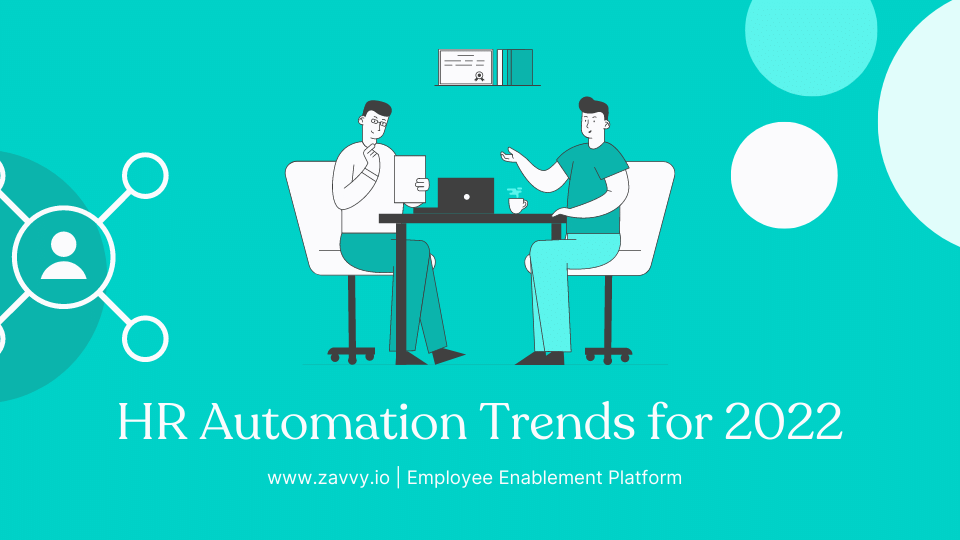
Most of today's tech trends are closely related to enhancing people's productivity. Technology used to be seen as an independent unit that worked in the background with barely any human engagement. Now, it's impossible to look at technology without analyzing its direct effects on the workforce, from automating workflows to enabling better collaboration.
Deloitte's Tech Trends 2022 highlighted four main factors explaining why future technology is becoming human-centric.
Regarding human resources, these trends translate into holistic dashboards, software, and devices meant to elevate the employee experience.
All of these lay at the heart of HR automation – putting employees' welfare first in a post-pandemic environment that has increasingly given more flexibility to the workforce.
HR automation uses software and cloud-based tools to automate and streamline manual tasks in workforce management, including employee onboarding, offboarding, and employee development.
The main goals of HR automation are to:
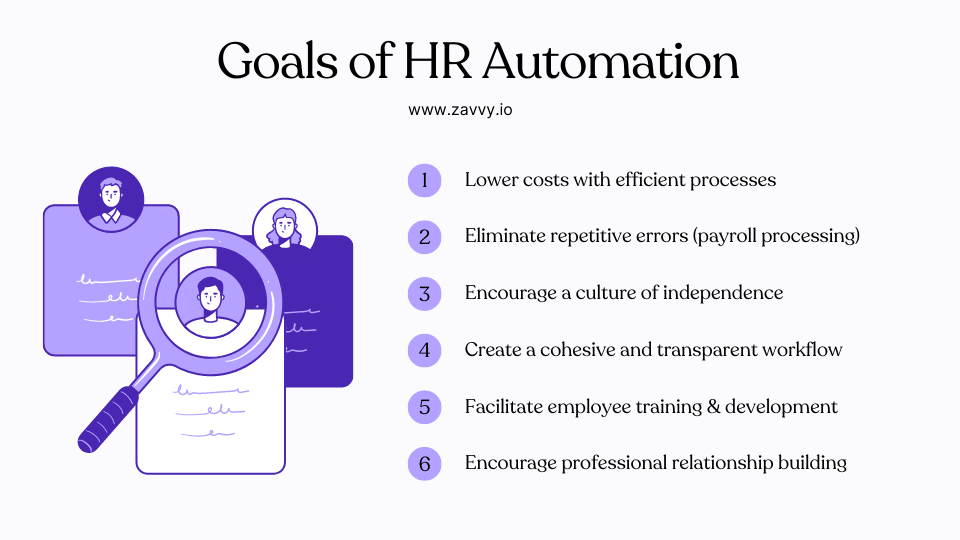
There are many tools out there that cater to each HR process.
Still, the main thing to consider is to prioritize high-quality employee experiences.
Remember: HR automation tools should not and will not replace human interaction. Instead, they enable these connections to become more meaningful.
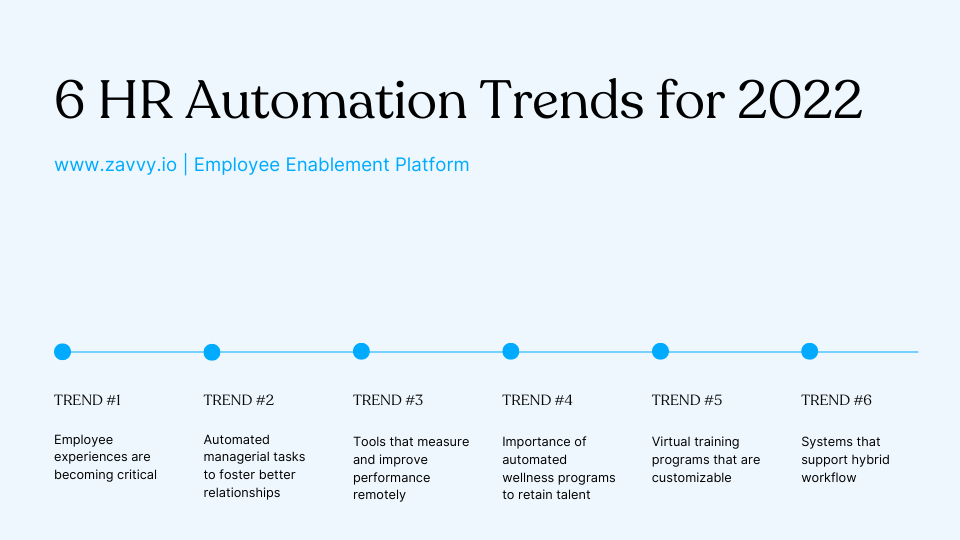
The corporate fixation on bureaucratic, meeting-heavy, and admin-centric working styles is about to end. It has to be if they want their employees to stay.
Like how satisfied customers are the bread and butter of commerce, employee engagement is becoming just as crucial to a company's survival.
Companies are now pouring resources into user-friendly dashboards, engaging onboarding journeys, and people operations programs.
HR teams must prioritize any employee challenges that could affect their longevity in the firm and focus on creating rewarding employee experiences.
For example, pre & onboarding can arguably be one of the most nerve-wracking periods for new employees. Rather than leaving employees stressed out on their own, offer support and boost their time to productivity.
Performance reviews are another example of stress-inducing activities.
Tip: Create a culture of constructive feedback and ensure that suggestions for improvement follow even negative remarks. Show your employees that you care about their betterment.
Not only is prioritizing employee experiences good for the workforce in general, but it is also beneficial for you as HR professionals.
With most of their repetitive tasks consolidated into a centralized system, you can focus on providing high-value, long-term recruitment and retention strategies.
As hybrid and remote work become more mainstream than ever, the role of managers is becoming extremely crucial.
Managers are the first line of defense whenever any concerns arise, and they can make or break employee satisfaction.
Many managerial tasks are repetitive and can be easily automated, including scheduling meetings, approving reimbursements and leaves, monitoring output, and giving performance reviews.
➡️ Discover how a 360 feedback system will streamline your team's review process and contribute to high-performance work culture.
HBR's research shows that by 2025, there is a potential to automate 65% of managerial tasks.
This development will change the definition of future managers. They will need to be trained from simply managing tasks and deliverables to managing an entire employee experience. This mindset shift will create more resilient leaders who embrace technology as an aide to build deeper relationships that will significantly add to employee value.
Hiring fewer managers can also translate into long-term cost savings for companies. Instead of assigning multiple managers for every team or department line, they can train managers more focused on ensuring a healthy work-life balance for employees.
Automation will free managers and allow them to focus on high-level business and workforce planning.
One of the biggest concerns of remote workers is the potential to receive unfair/biased performance review ratings.
Managers still show preconceptions regarding remote work productivity:
64% of managers from a Gartner survey said that in-office employees perform better than their remote counterparts. Additionally, 76% believed that in-office workers were more likely to receive promotions.
Remote work tools address this bias when used to measure and enhance performance.
However, some practices are still very controversial regarding performance monitoring.
For example, some employees are okay with time trackers.
Still, most will take issue with laptop cameras taking random pictures, or automatic screen captures.
Thus, companies must distinguish between performance tracking and privacy violations.
"Performance management systems need to be upgraded to measure productivity and outcome, rather than output and hours logged by employees to sustain productivity gains." Claudia Crummenerl, Managing Director, People, and Organization at Capgemini Invent.
A different performance approach would be using performance development tools streamlined into one mentorship program. By taking this approach, you can still track progress and, when needed, provide real-time course correction through feedback.
At the start of the global lockdowns, companies focused on measuring remote workers' productivity. Today, that metric has shifted into assessing employees' mental, physical, and financial health.
Fuelled by the Great Resignation, where burnout and toxic work cultures were the main drivers, companies are now battling to retain top talent.
Gartner's 2020 survey of HR executives showed that 94% of companies started heavily investing in wellness programs. About 85% increased mental health benefits (including teleconsultations) and half increased physical well-being support.
In 2022, HBR forecasts that more companies will adopt new metrics to measure their employees' overall well-being. But, one major challenge is encouraging employees to avail their wellness benefits and leaves, especially since less than 40% of employees take advantage of mental health programs.
However, companies are trying to address this by setting up automated systems that connect employees (and even their families) to online therapists, ensuring privacy.
Wellness management systems also provide general data to identify vulnerable profiles and apply preventive care.
Tip: If you want to be proactive with employee wellness, consider creating engagement activities.
Activities such as coffee roulettes can re-motivate remote team members and integrate them better into the company culture.
➡️ Discover 25 virtual wellness ideas for remote employees.
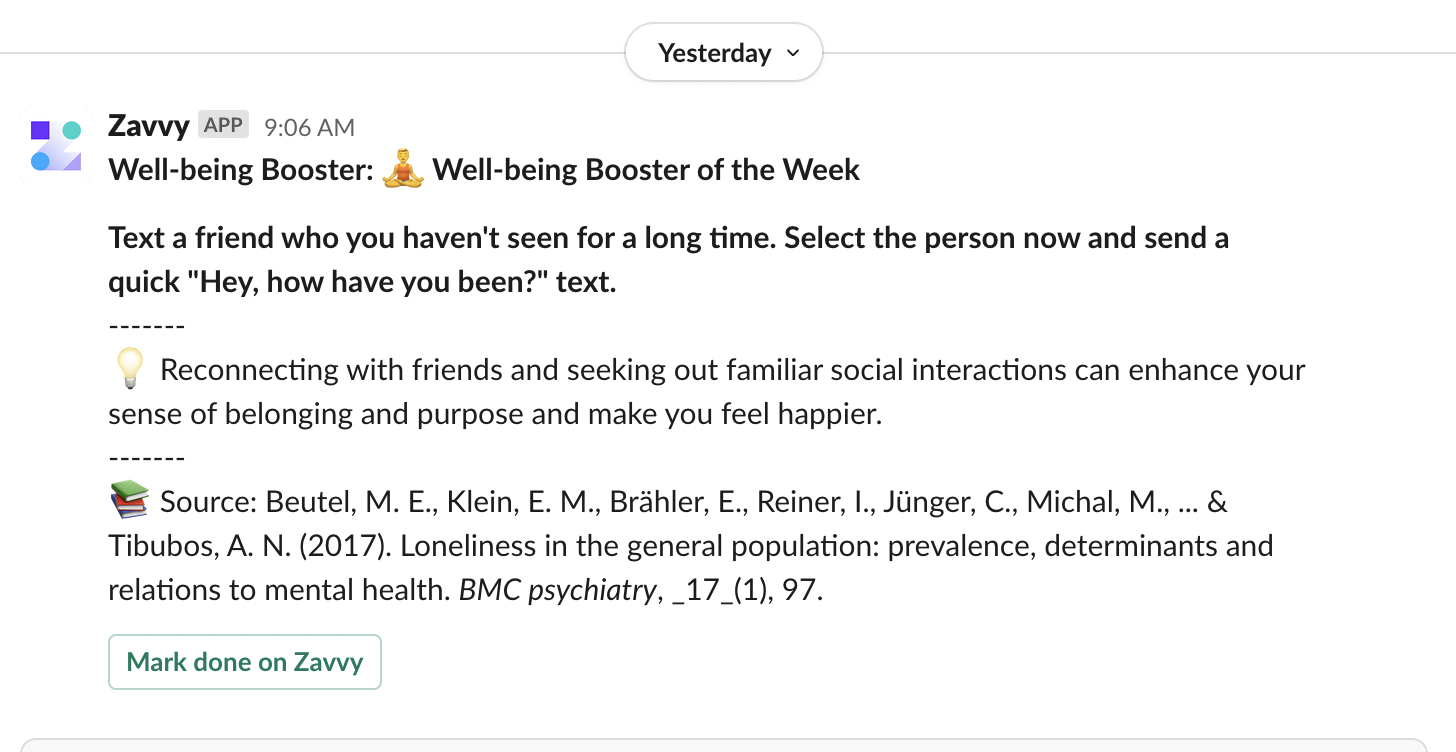
➡️ Check out Zavvy's connection program templates and start making your team feel connected.
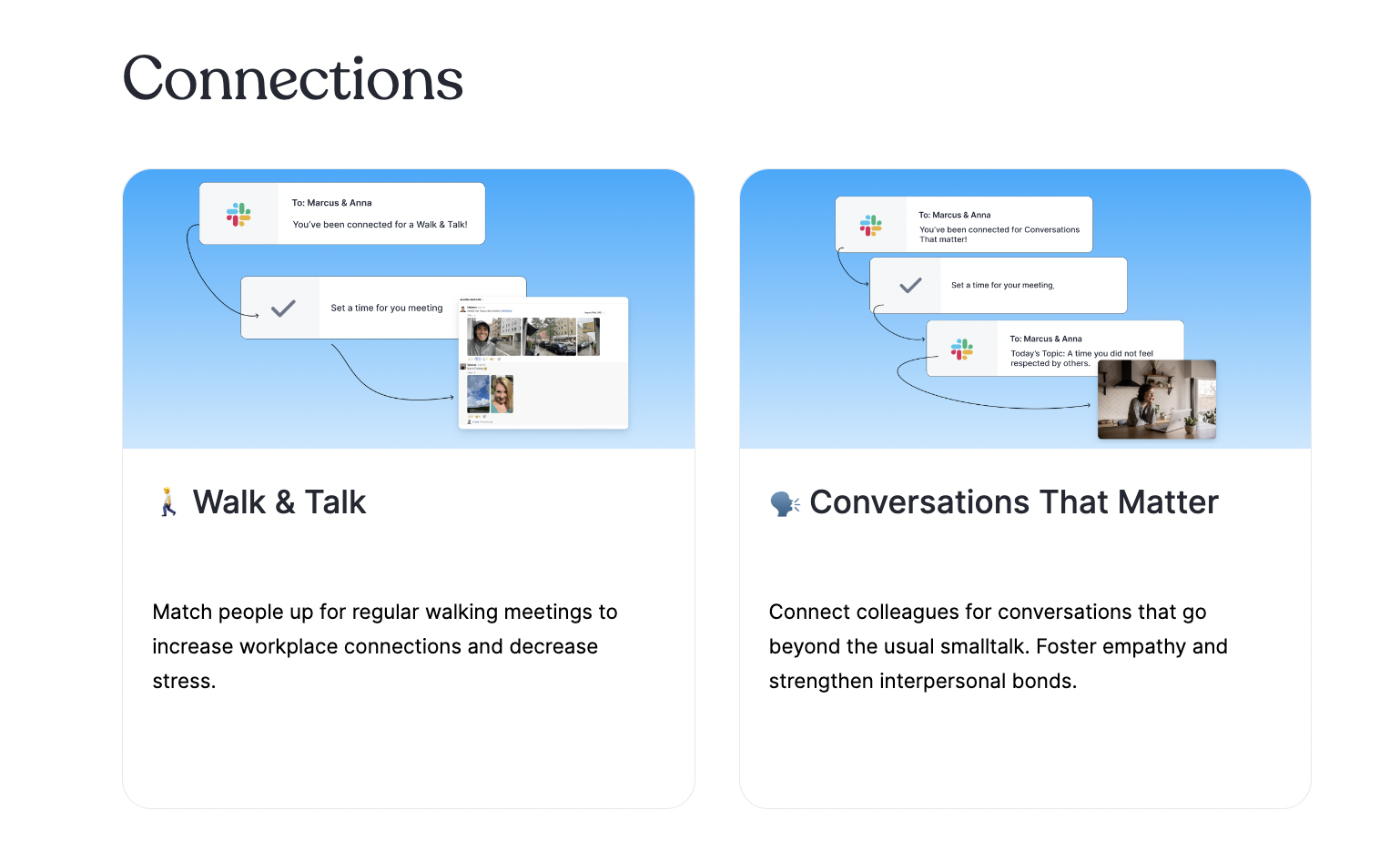
Learning management systems (LMS) have become necessary for upskilling a remote workforce.
Aside from helping companies save a lot of money from in-house workshops, online training is much more flexible.
One of the biggest complaints about traditional training is that it can add to employee fatigue due to its rigid, time-based structures.
With automated training programs, the employee and their manager can curate a program that targets their specific roles, schedules, and skillset needs.
Another benefit of e-learning is that it ensures a standardized experience for all. Evaluation and other data from these courses are consistent and can be easily analyzed by a centralized system.
Plus, AI can enhance your workers' learning experience when machine learning algorithms curate and recommend related courses.
As the future of work becomes increasingly digitized, a technologically competent workforce can make all the difference.
While most companies are using partnership subscriptions with online academies, many are also opting to design their in-house training programs. This is particularly useful for regulatory and compliance training that is unique to the business.
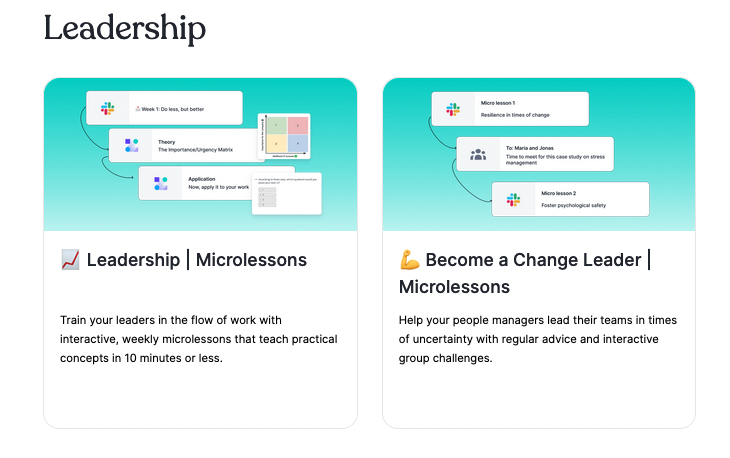
The hybrid work setup is becoming the most desirable work mode.
45% of employees expect to spend three days or more per week working from remote locations going forward, according to a Capgemini study.
This is a clear indication of the fast-rising trend of a hybrid and collaborative workplace.
The same study highlights that 72% of employees now expect companies to provide them with equipment (e.g., laptops and smartphones) allowing them to work on-site or remotely as needed.
The hybrid setup is also ideal for employees who want the option to socialize and collaborate with colleagues physically but still work from home most of the time.
As a result, HR teams must integrate more virtual training, team-building activities, and equipment to cater to employee preferences.
Companies are adopting different ways to collaborate and communicate in a hybrid environment through project management tools or teleconferencing devices.
Note: These platforms must focus on equal participation from both sides to ensure that all workers have similar opportunities to engage, connect and perform.
Do you want to create an engaging and high-quality employee experience for your company? With our workflow builder, you have the flexibility to customize automated processes for onboarding and run employee engagement and development programs.
We have templates that can serve as your guide and inspiration as you create your workflow.
In addition, you can easily integrate our product into your company's existing tools, such as Slack, Microsoft Teams, and Notion.
Our dedicated customer success managers and support team are also on standby to assist you if you have any questions.
➡️ We'd love to help you out. Schedule a free demo today.
Together with our curators, we have created a library of actionable digital marketing resources. Personalized to your team's needs.
Upskill your team every week with the best contents and personalized recommendations.

Most of today's tech trends are closely related to enhancing people's productivity. Technology used to be seen as an independent unit that worked in the background with barely any human engagement. Now, it's impossible to look at technology without analyzing its direct effects on the workforce, from automating workflows to enabling better collaboration.
Deloitte's Tech Trends 2022 highlighted four main factors explaining why future technology is becoming human-centric.
Regarding human resources, these trends translate into holistic dashboards, software, and devices meant to elevate the employee experience.
All of these lay at the heart of HR automation – putting employees' welfare first in a post-pandemic environment that has increasingly given more flexibility to the workforce.
HR automation uses software and cloud-based tools to automate and streamline manual tasks in workforce management, including employee onboarding, offboarding, and employee development.
The main goals of HR automation are to:

There are many tools out there that cater to each HR process.
Still, the main thing to consider is to prioritize high-quality employee experiences.
Remember: HR automation tools should not and will not replace human interaction. Instead, they enable these connections to become more meaningful.

The corporate fixation on bureaucratic, meeting-heavy, and admin-centric working styles is about to end. It has to be if they want their employees to stay.
Like how satisfied customers are the bread and butter of commerce, employee engagement is becoming just as crucial to a company's survival.
Companies are now pouring resources into user-friendly dashboards, engaging onboarding journeys, and people operations programs.
HR teams must prioritize any employee challenges that could affect their longevity in the firm and focus on creating rewarding employee experiences.
For example, pre & onboarding can arguably be one of the most nerve-wracking periods for new employees. Rather than leaving employees stressed out on their own, offer support and boost their time to productivity.
Performance reviews are another example of stress-inducing activities.
Tip: Create a culture of constructive feedback and ensure that suggestions for improvement follow even negative remarks. Show your employees that you care about their betterment.
Not only is prioritizing employee experiences good for the workforce in general, but it is also beneficial for you as HR professionals.
With most of their repetitive tasks consolidated into a centralized system, you can focus on providing high-value, long-term recruitment and retention strategies.
As hybrid and remote work become more mainstream than ever, the role of managers is becoming extremely crucial.
Managers are the first line of defense whenever any concerns arise, and they can make or break employee satisfaction.
Many managerial tasks are repetitive and can be easily automated, including scheduling meetings, approving reimbursements and leaves, monitoring output, and giving performance reviews.
➡️ Discover how a 360 feedback system will streamline your team's review process and contribute to high-performance work culture.
HBR's research shows that by 2025, there is a potential to automate 65% of managerial tasks.
This development will change the definition of future managers. They will need to be trained from simply managing tasks and deliverables to managing an entire employee experience. This mindset shift will create more resilient leaders who embrace technology as an aide to build deeper relationships that will significantly add to employee value.
Hiring fewer managers can also translate into long-term cost savings for companies. Instead of assigning multiple managers for every team or department line, they can train managers more focused on ensuring a healthy work-life balance for employees.
Automation will free managers and allow them to focus on high-level business and workforce planning.
One of the biggest concerns of remote workers is the potential to receive unfair/biased performance review ratings.
Managers still show preconceptions regarding remote work productivity:
64% of managers from a Gartner survey said that in-office employees perform better than their remote counterparts. Additionally, 76% believed that in-office workers were more likely to receive promotions.
Remote work tools address this bias when used to measure and enhance performance.
However, some practices are still very controversial regarding performance monitoring.
For example, some employees are okay with time trackers.
Still, most will take issue with laptop cameras taking random pictures, or automatic screen captures.
Thus, companies must distinguish between performance tracking and privacy violations.
"Performance management systems need to be upgraded to measure productivity and outcome, rather than output and hours logged by employees to sustain productivity gains." Claudia Crummenerl, Managing Director, People, and Organization at Capgemini Invent.
A different performance approach would be using performance development tools streamlined into one mentorship program. By taking this approach, you can still track progress and, when needed, provide real-time course correction through feedback.
At the start of the global lockdowns, companies focused on measuring remote workers' productivity. Today, that metric has shifted into assessing employees' mental, physical, and financial health.
Fuelled by the Great Resignation, where burnout and toxic work cultures were the main drivers, companies are now battling to retain top talent.
Gartner's 2020 survey of HR executives showed that 94% of companies started heavily investing in wellness programs. About 85% increased mental health benefits (including teleconsultations) and half increased physical well-being support.
In 2022, HBR forecasts that more companies will adopt new metrics to measure their employees' overall well-being. But, one major challenge is encouraging employees to avail their wellness benefits and leaves, especially since less than 40% of employees take advantage of mental health programs.
However, companies are trying to address this by setting up automated systems that connect employees (and even their families) to online therapists, ensuring privacy.
Wellness management systems also provide general data to identify vulnerable profiles and apply preventive care.
Tip: If you want to be proactive with employee wellness, consider creating engagement activities.
Activities such as coffee roulettes can re-motivate remote team members and integrate them better into the company culture.
➡️ Discover 25 virtual wellness ideas for remote employees.

➡️ Check out Zavvy's connection program templates and start making your team feel connected.

Learning management systems (LMS) have become necessary for upskilling a remote workforce.
Aside from helping companies save a lot of money from in-house workshops, online training is much more flexible.
One of the biggest complaints about traditional training is that it can add to employee fatigue due to its rigid, time-based structures.
With automated training programs, the employee and their manager can curate a program that targets their specific roles, schedules, and skillset needs.
Another benefit of e-learning is that it ensures a standardized experience for all. Evaluation and other data from these courses are consistent and can be easily analyzed by a centralized system.
Plus, AI can enhance your workers' learning experience when machine learning algorithms curate and recommend related courses.
As the future of work becomes increasingly digitized, a technologically competent workforce can make all the difference.
While most companies are using partnership subscriptions with online academies, many are also opting to design their in-house training programs. This is particularly useful for regulatory and compliance training that is unique to the business.

The hybrid work setup is becoming the most desirable work mode.
45% of employees expect to spend three days or more per week working from remote locations going forward, according to a Capgemini study.
This is a clear indication of the fast-rising trend of a hybrid and collaborative workplace.
The same study highlights that 72% of employees now expect companies to provide them with equipment (e.g., laptops and smartphones) allowing them to work on-site or remotely as needed.
The hybrid setup is also ideal for employees who want the option to socialize and collaborate with colleagues physically but still work from home most of the time.
As a result, HR teams must integrate more virtual training, team-building activities, and equipment to cater to employee preferences.
Companies are adopting different ways to collaborate and communicate in a hybrid environment through project management tools or teleconferencing devices.
Note: These platforms must focus on equal participation from both sides to ensure that all workers have similar opportunities to engage, connect and perform.
Do you want to create an engaging and high-quality employee experience for your company? With our workflow builder, you have the flexibility to customize automated processes for onboarding and run employee engagement and development programs.
We have templates that can serve as your guide and inspiration as you create your workflow.
In addition, you can easily integrate our product into your company's existing tools, such as Slack, Microsoft Teams, and Notion.
Our dedicated customer success managers and support team are also on standby to assist you if you have any questions.
➡️ We'd love to help you out. Schedule a free demo today.
Get a demo!
We'll be happy to show you around and answer all your questions.
Trusted by innovative companies


We'll be happy to show you around, answer your questions, or arrange a free trial.
Erhalten Sie eine kostenlose Demo unserer Onboarding-Software.
Vertraut von



Your Training & Development Strategy - Solved in 1 Tool.
Trusted by innovative companies



We'll be happy to show you around, answer your questions, or arrange a free trial.
Learn how Zavvy helps you drive performance, development, and engagement.
Trusted by innovative companies



We'll be happy to show you around, answer your questions, or arrange a free trial.
We'll be happy to show you around and answer all your questions.
Trusted by innovative companies



We'll be happy to show you around, answer your questions, or arrange a free trial.
Gerne zeigen wir Ihnen ganz unverbindlich unsere Plattform im Detail.
Vertraut von modernen Unternehmen



Get a demo!
We'll be happy to show you around and answer all your questions.
Trusted by innovative companies



We'll be happy to show you around, answer your questions, or arrange a free trial.
Erhalten Sie eine kostenlose Demo unserer Software für Mitarbeiterenwicklung und Training.
Moderne Unternehmen
setzen auf Zavvy


